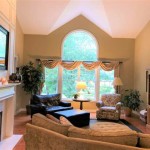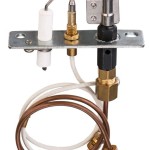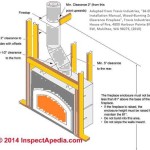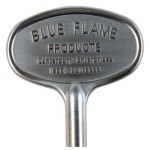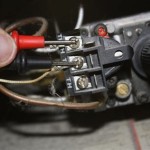Fascia Beams for Fireplaces: Aesthetics and Functionality
Fascia beams, traditionally used in construction to conceal and protect structural elements of a building’s exterior, have found a renewed purpose in interior design, particularly as decorative and functional additions to fireplaces. These beams, often crafted from wood but also available in manufactured materials, can significantly enhance the aesthetic appeal of a fireplace while offering practical benefits such as concealing wiring or providing a mounting surface for decorative items.
The application of a fascia beam to a fireplace is more than just a cosmetic upgrade. It represents a thoughtful integration of design and function, adding visual weight and character to the hearth. The selection of materials, size, and style of the fascia beam are crucial considerations in ensuring a cohesive and harmonious final result. Factors such as the existing architectural style of the room, the size of the fireplace, and the desired aesthetic impact all play a significant role in the decision-making process.
Unlike a traditional mantel, which typically sits directly above the fireplace opening, a fascia beam can be positioned anywhere along the fireplace structure. This allows for greater flexibility in design and allows the beam to be integrated seamlessly into the surrounding wall. This flexibility makes fascia beams particularly well-suited for contemporary fireplace designs where clean lines and minimalist aesthetics are often desired.
Aesthetic Considerations for Fascia Beams
The aesthetic appeal of a fascia beam hinges on several key factors, including the material, finish, and style chosen. Wood is a popular choice, offering a natural warmth and texture that complements a variety of interior design styles. Options range from rustic reclaimed barn wood to smooth, polished hardwoods, each offering a distinct visual character. Alternative materials, such as faux wood beams made from polyurethane, provide a lighter-weight and often more cost-effective solution while still mimicking the appearance of real wood.
The finish applied to the fascia beam significantly impacts its overall look. Stains, paints, and varnishes can be used to achieve a variety of effects, from highlighting the natural grain of the wood to creating a bold, contemporary statement. Dark stains and paints can create a sense of depth and drama, while lighter hues can brighten a space and create a more airy feel. The choice of finish should be carefully considered in relation to the existing color palette of the room and the desired aesthetic impact.
Style is another crucial consideration. A rustic, hand-hewn beam might be ideal for a country-style home, while a sleek, minimalist beam might be more appropriate for a modern space. The beam's edges, the presence or absence of knots and imperfections, and the overall shape all contribute to its stylistic character. It is essential to select a beam that complements the existing architectural style and enhances the overall design vision.
Furthermore, the size and proportion of the fascia beam relative to the fireplace and the surrounding wall are critical. A beam that is too large can overwhelm the space, while one that is too small can appear insignificant. Careful measurements and consideration of the visual weight of the beam are necessary to achieve a balanced and harmonious result.
Functional Benefits of Fascia Beams
Beyond their aesthetic appeal, fascia beams offer several functional benefits. One key advantage is their ability to conceal wiring and other unsightly mechanical elements. Fireplaces often require electrical connections for lighting, fans, or other accessories. A fascia beam can provide a discreet channel for running these wires, keeping them hidden from view and creating a cleaner, more polished look.
Another practical benefit is that fascia beams can provide a mounting surface for decorative items. Unlike a flat wall, a beam offers a three-dimensional element that can be used to display artwork, photographs, or other cherished possessions. The beam can also serve as a support for hanging plants or other decorative elements, adding visual interest and texture to the space.
In some cases, a fascia beam can also provide structural support. While not typically designed to bear heavy loads, a well-constructed beam can add stability to the fireplace structure, particularly in older homes where the original construction may be less robust. This is particularly true for fireplaces that have undergone renovations or modifications over time.
Moreover, fascia beams can contribute to the overall thermal performance of a fireplace. By creating a buffer zone between the fireplace opening and the surrounding wall, the beam can help to insulate the space and reduce heat loss. This can be particularly beneficial in older homes that are not well insulated.
Installation Considerations for Fascia Beams
The installation of a fascia beam requires careful planning and execution to ensure a secure and aesthetically pleasing result. The first step is to determine the desired placement of the beam. This should be based on both aesthetic considerations and functional requirements, such as the need to conceal wiring or provide a mounting surface.
Once the placement has been determined, the next step is to prepare the mounting surface. This typically involves cleaning the wall and ensuring that it is level and structurally sound. Any existing irregularities or imperfections should be addressed before proceeding with the installation.
The method of attachment will depend on the type of beam being installed and the construction of the fireplace. For lighter-weight beams, construction adhesive and screws may be sufficient. For heavier beams, more robust mounting hardware, such as heavy-duty brackets or lag bolts, may be required. It is essential to consult with a qualified professional to determine the appropriate mounting method for the specific application.
When installing a fascia beam made of wood, it is important to consider the potential for expansion and contraction due to changes in temperature and humidity. Leaving a small gap between the beam and the surrounding wall can help to prevent cracking or warping. This gap can be concealed with caulk or trim.
Finally, after the beam has been installed, it is important to inspect it carefully to ensure that it is securely attached and that there are no visible signs of stress or strain. Any necessary adjustments should be made promptly to prevent future problems. Regular maintenance, such as cleaning and occasional refinishing, can help to keep the fascia beam looking its best for years to come.
The selection of appropriate fasteners is crucial. Using the wrong type of screws or bolts can compromise the structural integrity of the installation and potentially lead to the beam detaching from the wall. It is advisable to consult with a hardware professional to determine the best fasteners for the specific materials being used and the weight of the beam.
Safety precautions must be taken during the installation process. Wearing appropriate safety gear, such as eye protection and gloves, is essential when working with power tools and construction materials. If the installation involves working at heights, a stable ladder or scaffolding should be used. It is also important to ensure that the work area is well-ventilated when using adhesives or finishes that emit fumes.
The integration of lighting can further enhance the aesthetic appeal of a fascia beam. Recessed lighting fixtures can be installed to illuminate the beam from above or below, creating a dramatic effect. Alternatively, track lighting can be mounted on the beam to provide focused illumination for artwork or other decorative elements. The choice of lighting should be carefully considered in relation to the overall design vision and the desired mood.

Focus Large Fascia Beams For Fireplaces From 118 Plus Vat Rigbys

Aged Oak Fascia Beam Traditional Beams Ltd Fast Delivery

Standard Fascia Character Non Combustible Timber Effect Fireplace Beam Bonfire

Focus Standard Fascia Beam Fireplace Supers

Focus Fireplaces Focuscast Large Fascia Beam Portland Non Combustible Stone Effect Stoke Flame

Focus Standard Fascia Beam Fireplace Supers

Large Fascia Tudor Non Combustible Timber Effect Fireplace Beam Bonfire Fireplaces Stoves

Large Fascia Beam The Fireplace Super

Focus Fireplaces Focuscast Large Fascia Beam Limestone Non Combustible Stone Effect Stoke Flame

Rustic Oak Fascia Beam 48 W X 8 H 4 D Valleys Group
Related Posts

